Imagine this: a group of 15 University of Michigan students from a variety of backgrounds and disciplines. They’re decked out in maize and blue and matching lanyards. Clustered together on a sloping sidewalk, they’re surrounded by buildings much taller than those found in Ann Arbor, Michigan. Instead of walking through the diag to get to class, they’re navigating the streets of the financial district of San Francisco.
Filled with ambition, inspiration, and excitement, these students are embarking on an entrepreneurial journey more than 2,000 miles from home.
The Weather Underground Startup Trek, known as WUST, is a yearly trip to the Bay Area. There, students broaden their networks, build their entrepreneurial brands, immerse themselves into the challenges faced by today’s startups, and work alongside Bay Area experts, advisors, and mentors.
Let’s look at a play-by-play of events from the trek. Buckle up, because the road ahead is filled with exciting networking opportunities, innovative problem-solving, and adventure!
On day one, the group was buzzing with excitement. For many students, this was their very first time experiencing the Bay Area. The innovative spirit of Silicon Valley is almost contagious!
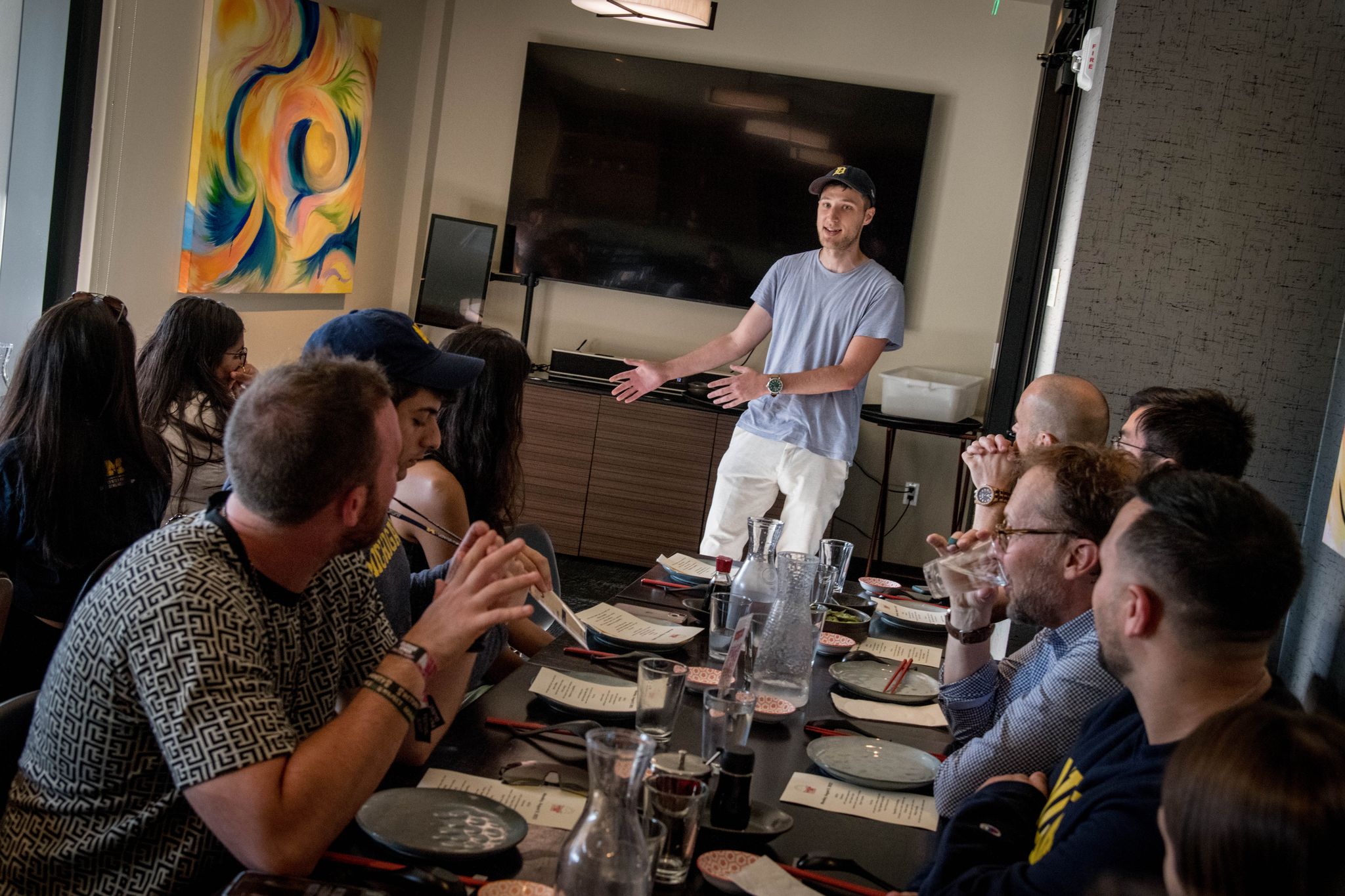 After arriving at the hotel, students enjoyed a dinner with John Mannes, an alumni who previously worked at TechCrunch as a journalist. He later joined fellow U-M alum Lan Lan at Basis Set Ventures where he now works as an investor.
After arriving at the hotel, students enjoyed a dinner with John Mannes, an alumni who previously worked at TechCrunch as a journalist. He later joined fellow U-M alum Lan Lan at Basis Set Ventures where he now works as an investor.
During this dinner, John gave students an informal presentation titled “Silicon Valley 101,” in which he spoke about his own personal career journey and offered up tips for navigating the Venture Capital scene. He stressed the importance of social credibility and the profound impact of the U-M alumni network.
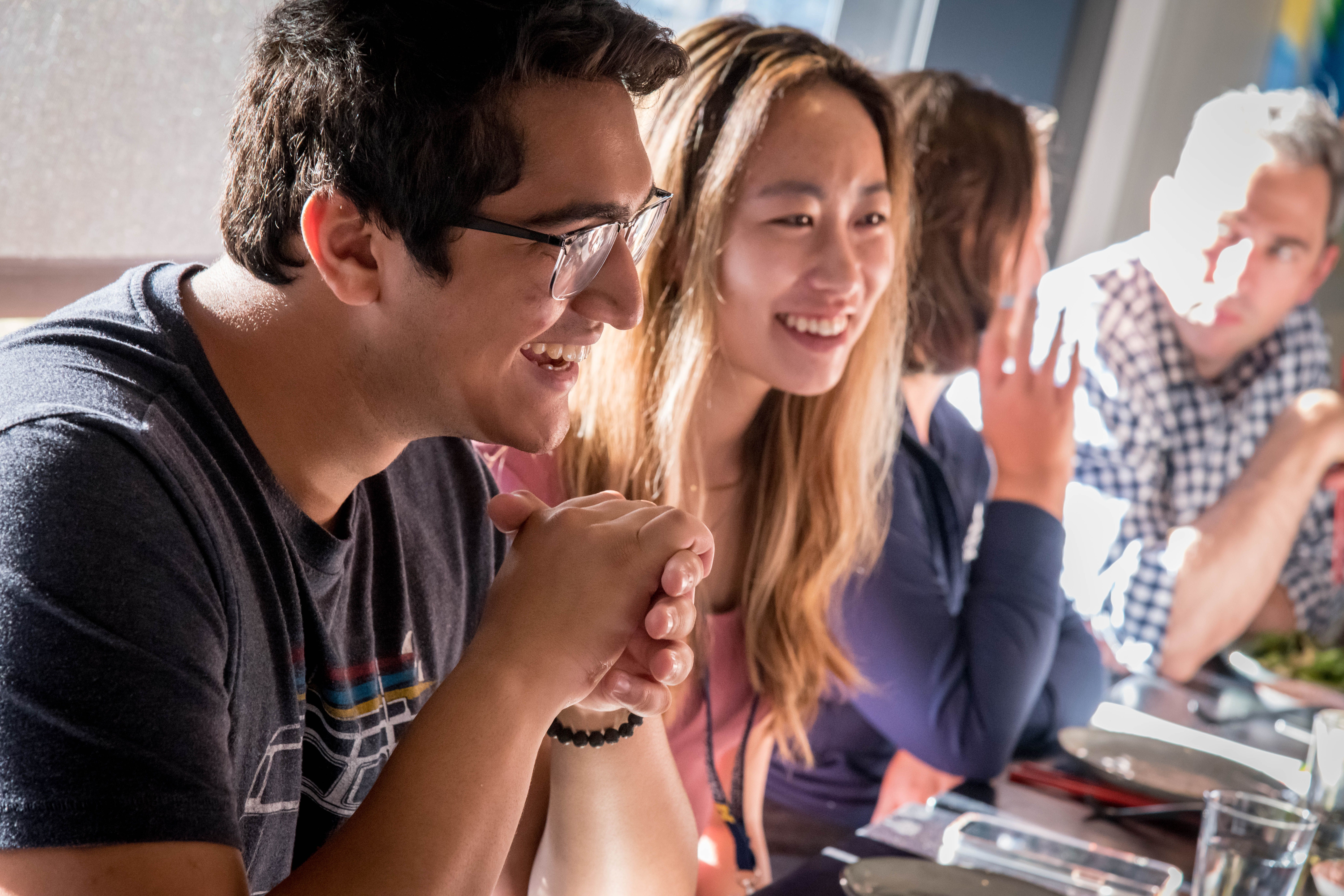
“You cannot possibly get out of the Michigan network community in any possible way,” Mannes joked. “Ultimately, part of finding a job, finding your place in Silicon Valley, regardless of whether you work at a startup, work at a larger tech company, start your own company, or go into venture, is cultivating that community and network.”
John’s advice for those looking to make the move to San Francisco? Take advantage of the network early on.
“You need a community of people who have your back. Having Michigan behind you is a phenomenal way to have something to plug into when you get here.”
During the dinner, students had the chance to network with Mannes as well as a group of alumni local to the San Francisco area. For UM Computer Science, Economics, and Entrepreneurship student Aniket Jain, these discussions were crucial and eye-opening.
“We talked about how the internet is an echo chamber of the same ideas and to truly build something new you need to cut through the opinions and have your own thoughts after extracting the facts from opinionated articles. This was very eye-opening for me and is advice that I’m always going to keep with me.”
After multiple rounds of delicious dumplings and noodles, it was time to go back to the hotel and get some rest for Day two.
Day two was jam-packed with invigorating presentations, innovation challenges, and networking opportunities.

Students started their day with Inder Singh, CEO and Founder of Kinsa Health, a health tech startup. Kinsa helps individuals and communities stop the spread of infectious illness by building a communication network that connects more than a million users with a free app, email alerts, and a connected thermometer. This isn’t the first time Inder will interact with students this year — he’s set to be a featured speaker in this fall’s Entrepreneurship Hour course.
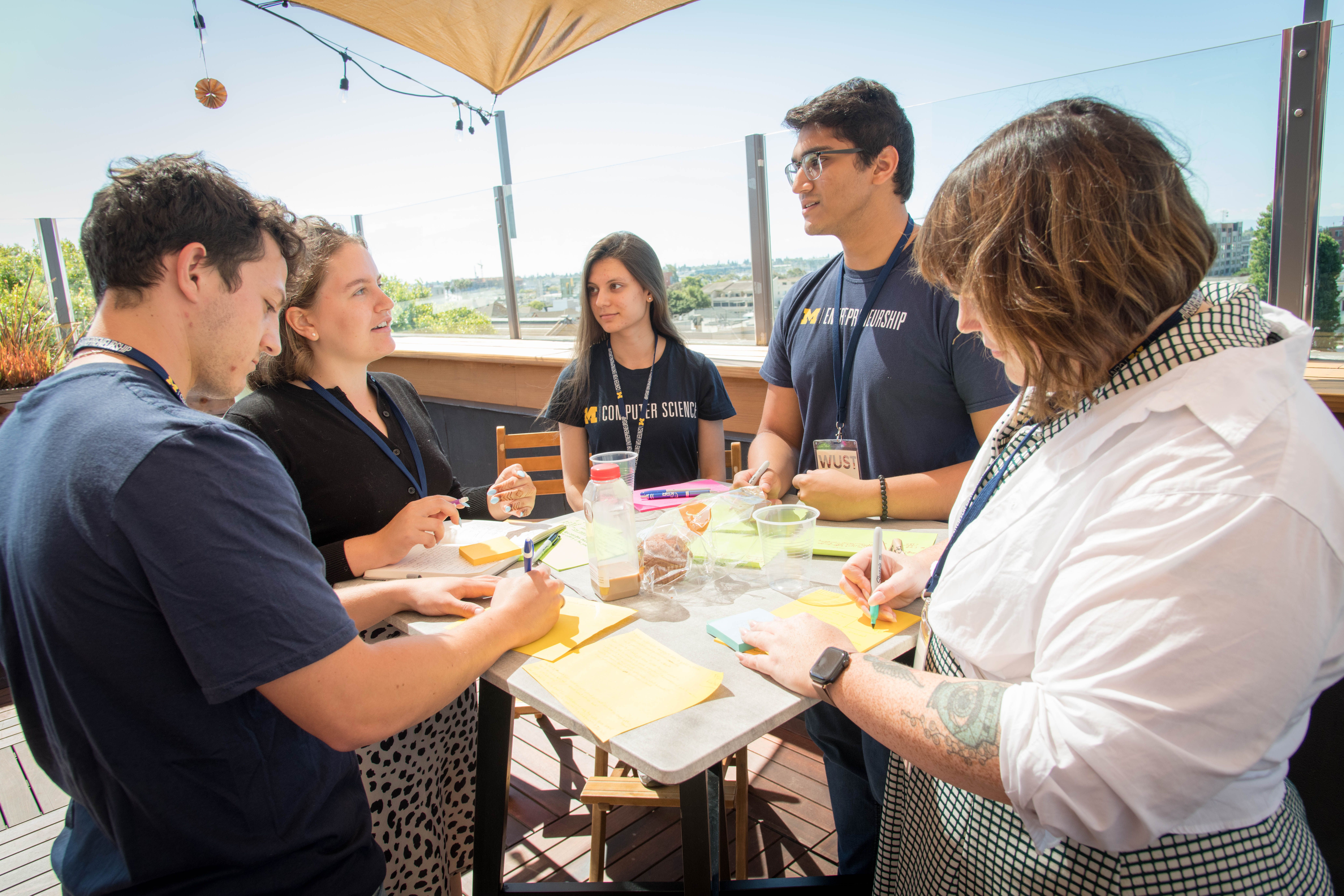 Inder offered an introduction to himself and Kinsa, then provided students with lots of time for questions. Students asked questions like, ”If you want to get into a startup, where should you start?” and “How do I get into public health advancing tech?” After the Q&A session, students participated in a pitch competition where they identified ways to reach new markets.
Inder offered an introduction to himself and Kinsa, then provided students with lots of time for questions. Students asked questions like, ”If you want to get into a startup, where should you start?” and “How do I get into public health advancing tech?” After the Q&A session, students participated in a pitch competition where they identified ways to reach new markets.
After student groups presented their pitches, Inder offered constructive feedback. The winning group even received Kinsa thermometors! After some final career advice, students said goodbye to Inder.
After a quick lunch, Brent Aguilar arrived. Brent is an Innovation Specialist focusing on Health Systems in the U.S. Department of Veterans Affairs in San Francisco. He works with teams to innovate effective health service for veterans, focusing on customer discovery and user experience.
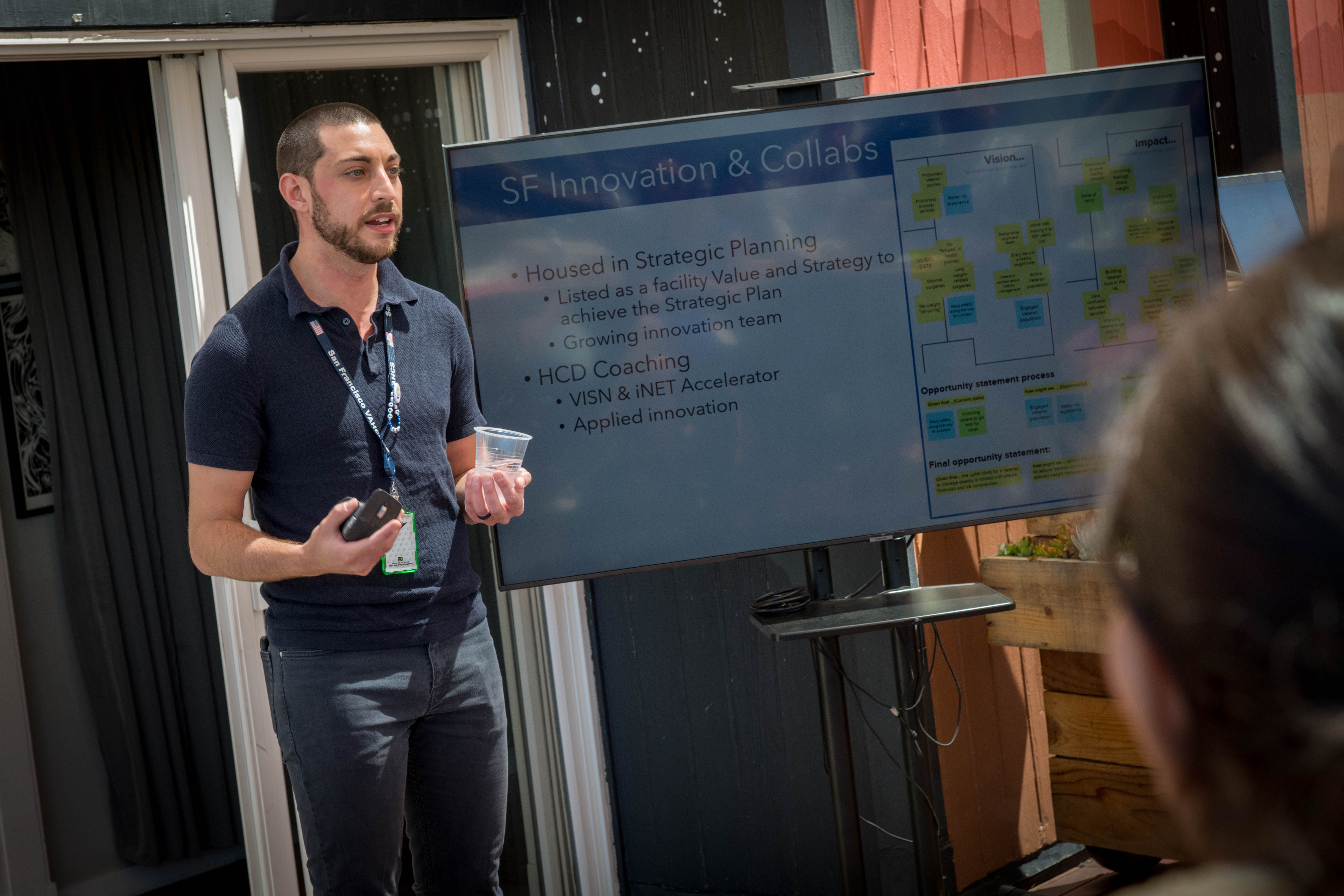
Brent provided an interactive presentation for students which focused on the double diamond design thinking process and how they use the process for the SF Veteran’s Affairs Hospital. Next, it was already time for another innovation challenge! Oona Bernhardt, Chief of Strategic Planning at the San Francisco VA Health Care System, joined virtually to judge the presentations. Students put their heads together to solve the following prompt:
Given decreasing enrollment in the VA healthcare market, decrease is offset due to more needs for a smaller number of people. How do we find and effectively reach out to people in our market who are not seeking care with us?
After presenting their innovative solutions for reaching new markets, students headed off to Sila Nanotechnologies, one of the world’s leading battery manufacturers.
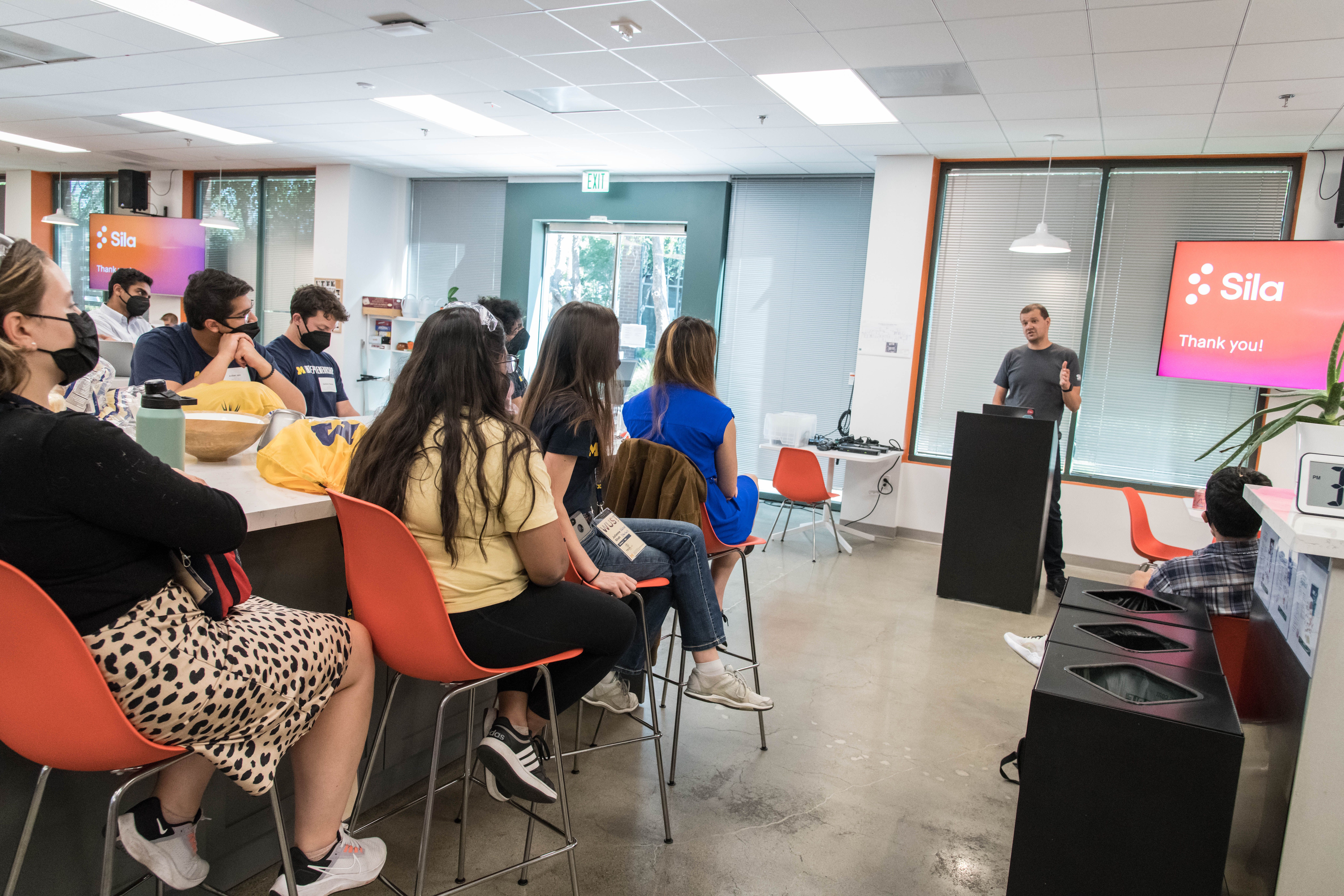 Halley Crast, People Lead at Sila, welcomed students into the main office where CEO and Co-Founder Gene Berdichevsky provided an overview of the history and hypergrowth of Sila. Students asked questions, received career advice, and even went on a confidential tour of the facility where batteries are created.
Halley Crast, People Lead at Sila, welcomed students into the main office where CEO and Co-Founder Gene Berdichevsky provided an overview of the history and hypergrowth of Sila. Students asked questions, received career advice, and even went on a confidential tour of the facility where batteries are created.
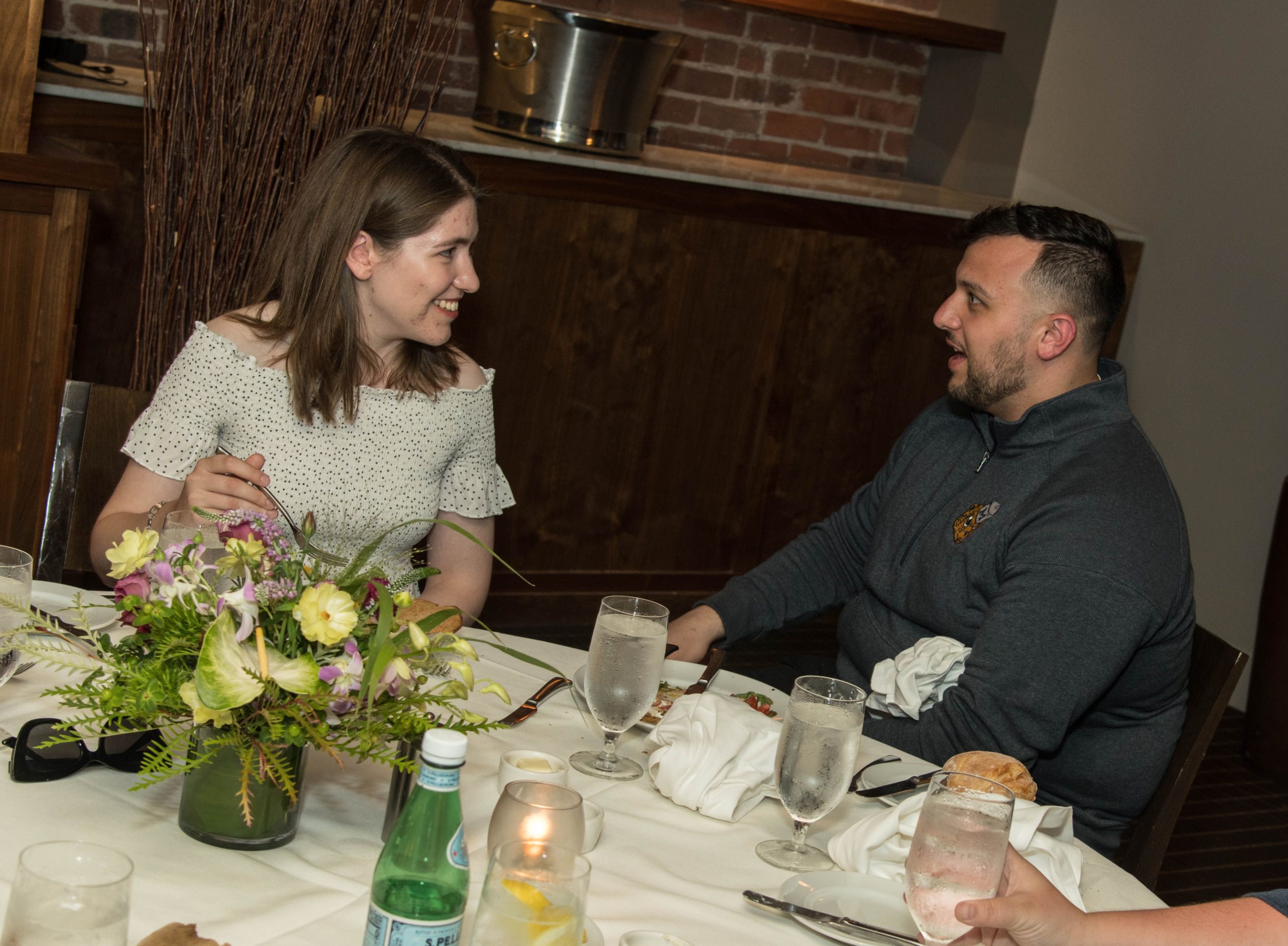 “I really appreciated how Gene Berdichevsky of Sila explained their technology so simply and clearly,” said Jessica Liang, MBA Student at Ross School of Business.
“I really appreciated how Gene Berdichevsky of Sila explained their technology so simply and clearly,” said Jessica Liang, MBA Student at Ross School of Business.
After the tour, students headed off to dinner. Emma Kirst from Human Capital, an investment firm for engineering-based startups, was kind enough to host the group at a restaurant in Downtown San Francisco.
There, students were lucky enough to meet with a wide array of UM alumni from all schools and disciplines. After a night of lively conversation, delicious food, and networking opportunities galore, day two officially came to an end.

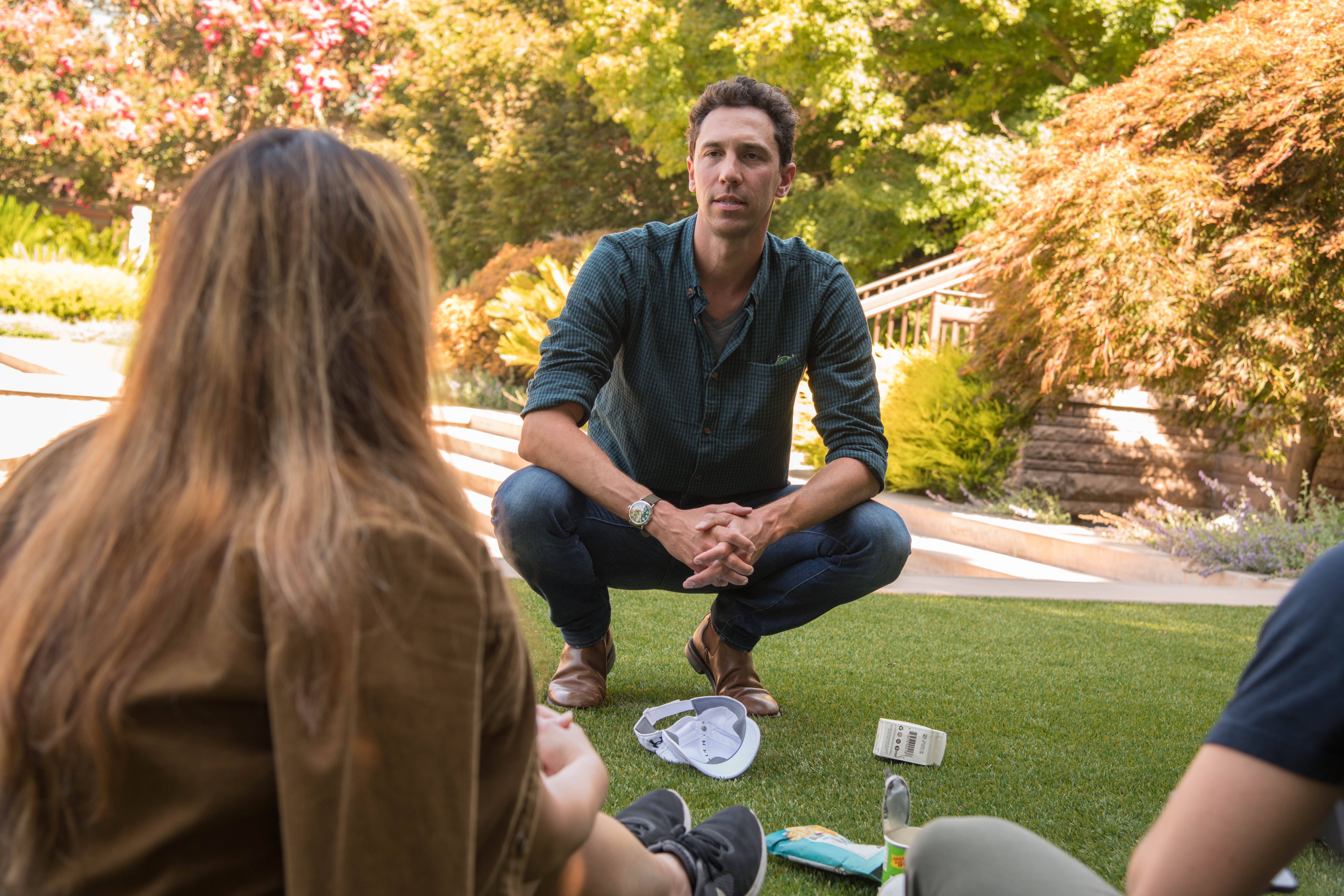
Day three began with a bus ride to Palo Alto, CA. First, students ventured to the infamous Sand Hill Road. They met Jonathan Golden at New Enterprise Associates, a venture capital firm that invests in businesses looking to change the world for the better. He spoke to students about his career journey, inspiring them to be active agents in creating their own future.
“My career has been very forward-thinking and opportunity seeking. I encourage you all to create your own opportunities … Be a maker of opportunities, not a taker,” Golden said.
After the inspiring presentation from Jonathan, students took on another innovation challenge. They worked in groups to pitch an emerging market for NEA to invest in. Students received free NEA t-shirts, and then it was back on the bus for stop number two.
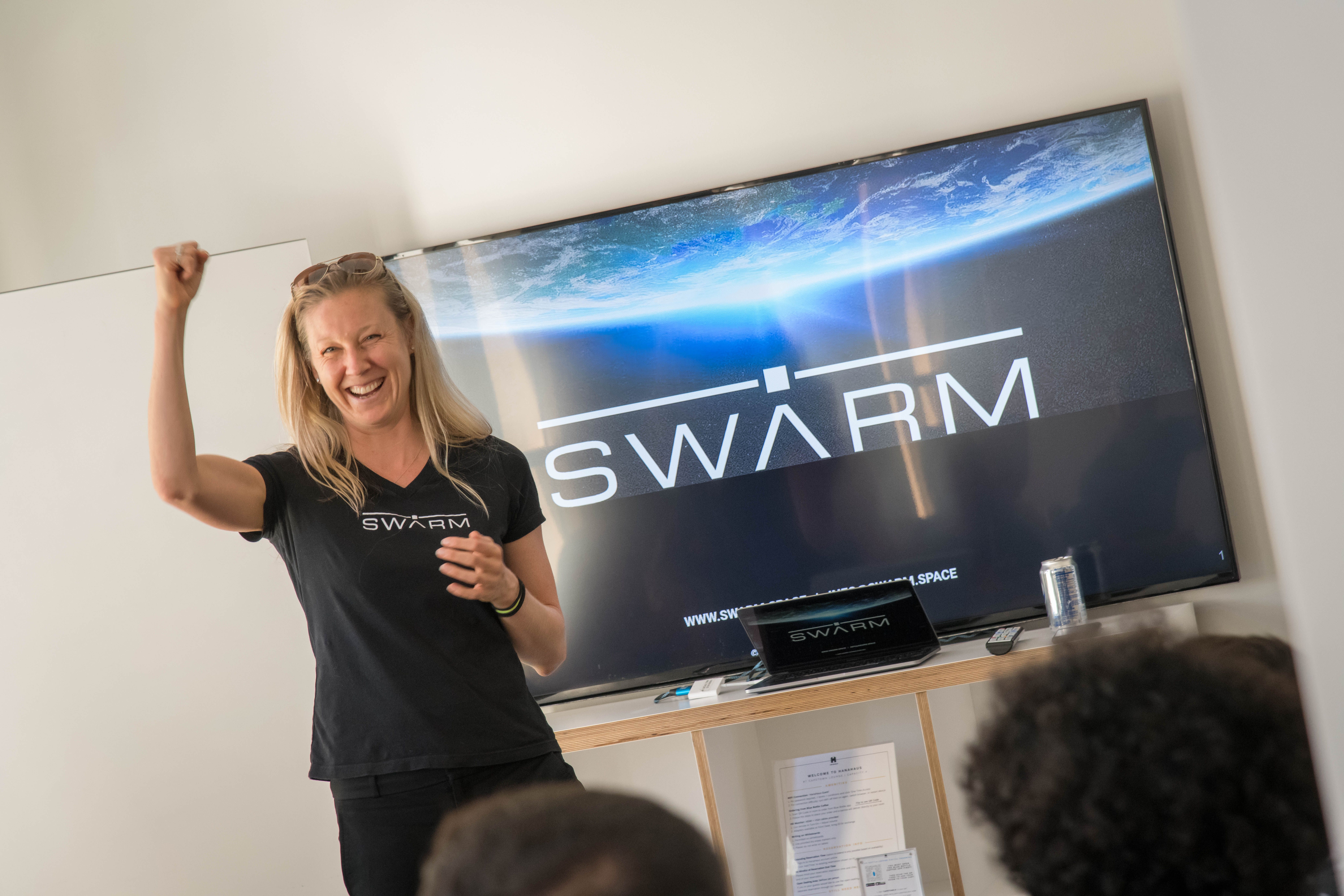
The next stop included a visit with Sara Spangelo, co-founder of Swarm Technologies. Swarm creates tiny, low-cost satellites that communicate with IoT devices. The company was recently acquired by SpaceX.
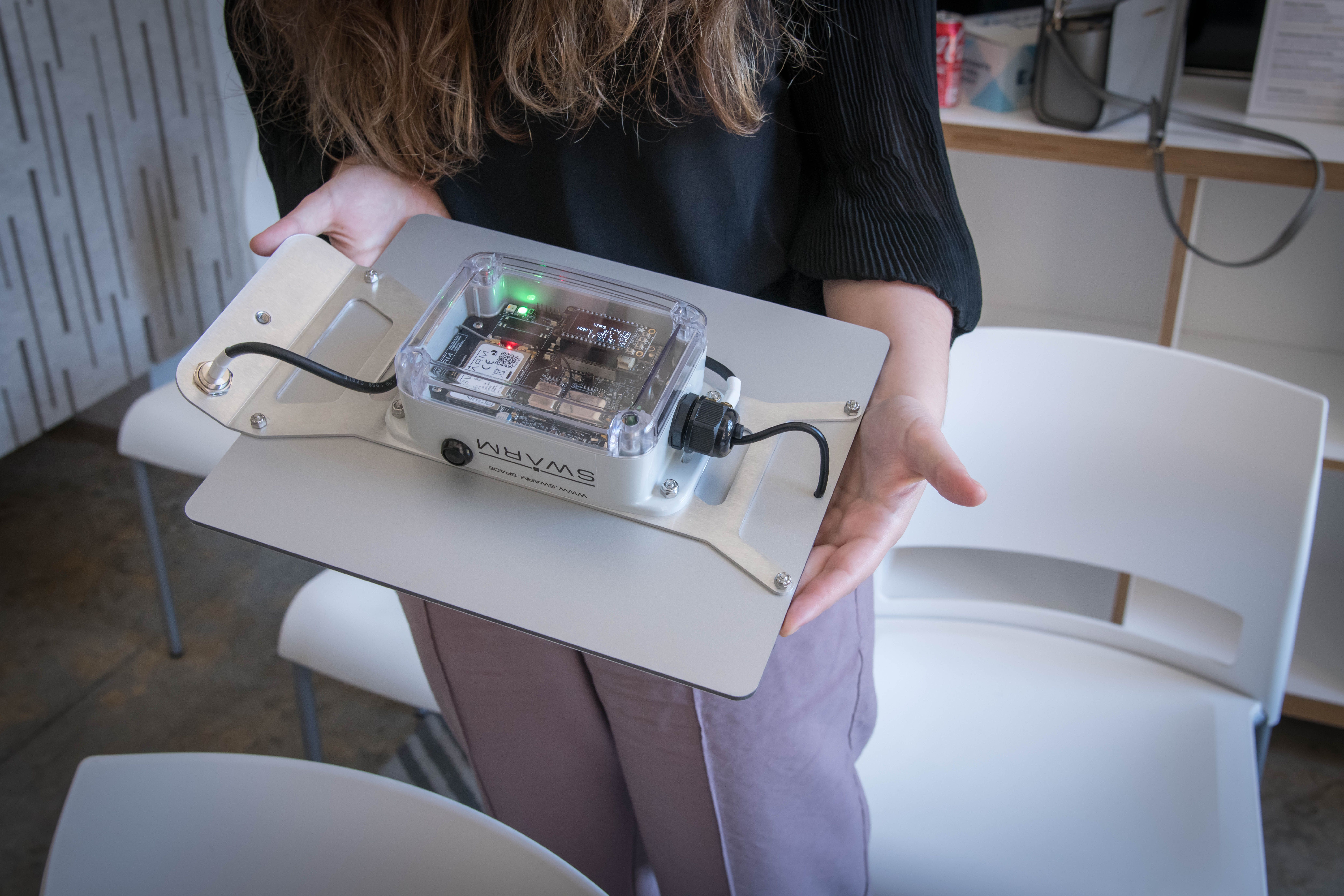
Sara provided an overview of Swarm, answered lots of students’ questions, and passed around a tiny satellite for students to observe. Next, students were tasked to come up with a new, innovative use for Swarm’s satellite technology. The winning team proposed using IoT data to monitor animals in the wildlife to prevent extinction.
For Applied Mathematics and Economics student Caroline Slack, this experience was especially meaningful. Caroline said, “My favorite stop was Swarm–it was really impactful to be in a room with all women from a highly-technical start-up and to receive such great feedback on our innovation challenge pitches. Not only that, but Swarm is an exceptional example for how technology can solve the world’s problems!”
After all the excitement of the Swarm visit, it was time to board the bus for the final official stop of the trek. As the group traveled to Zipline Headquarters, another startup that uses innovative tech to make a positive impact, the buzz continued.
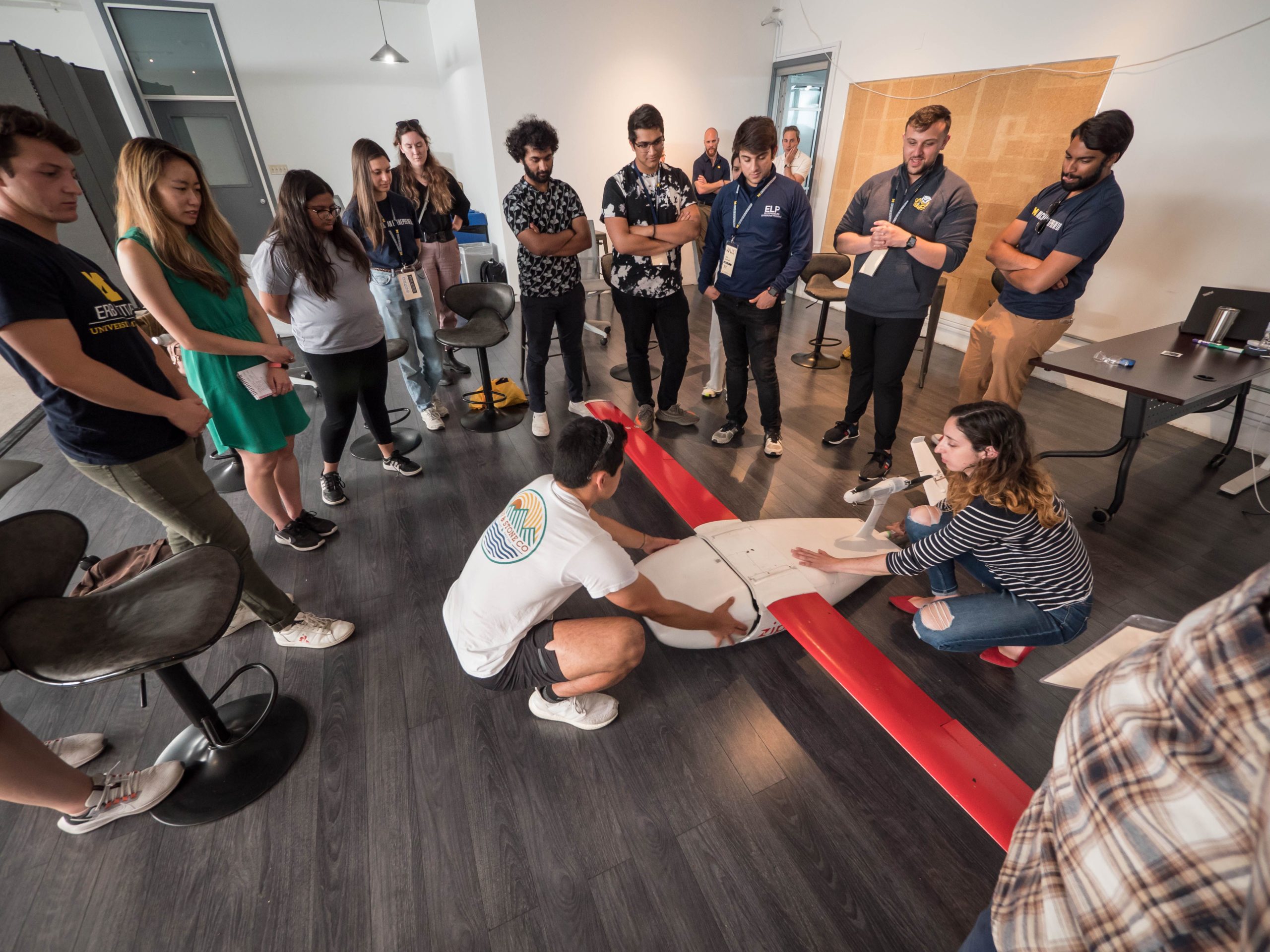 Zipline creates autonomous drones that deliver essential medical supplies globally. Perception Engineer Julie Messing and Strategic Finance Manager Mac Kern presented on Zipline’s philosophy, financial strategy, and technology. Students were even able to see a real-life Zipline drone up-close!
Zipline creates autonomous drones that deliver essential medical supplies globally. Perception Engineer Julie Messing and Strategic Finance Manager Mac Kern presented on Zipline’s philosophy, financial strategy, and technology. Students were even able to see a real-life Zipline drone up-close!
After lots of Q&A, the visit came to an end and students headed back to the hotel for some much-needed rest.

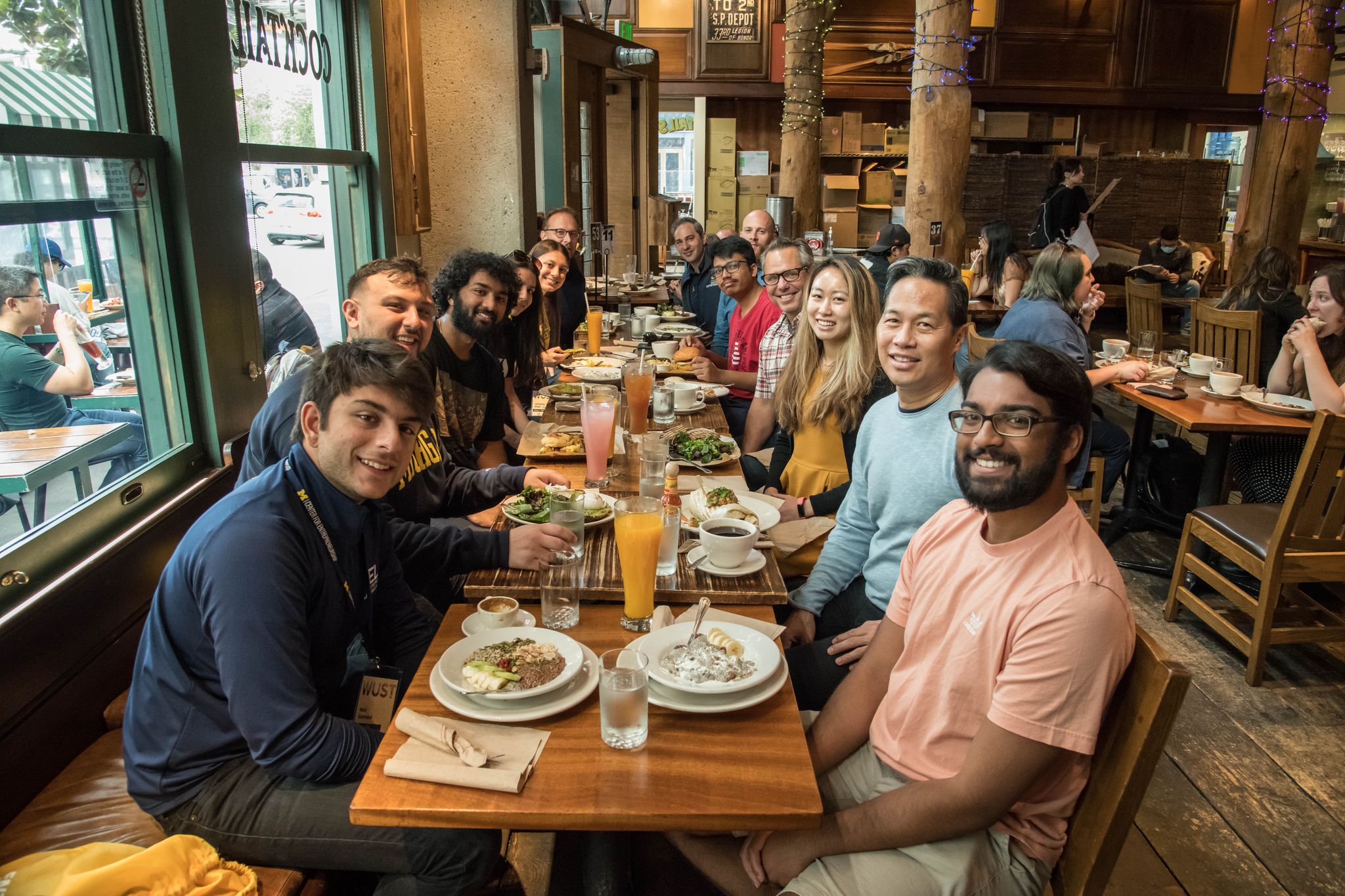
As the trek came to a close, students met at The Grove, a nearby brunch spot, for one final networking opportunity. While enjoying lattes, crepes, and breakfast burritos galore, students had the chance to meet Richard Lui, bestselling author and News Anchor at MSNBC. They also had the chance to speak with Peter Giordano, Global Director of Product-GTM Lifecycle at Google Workspace.
For Julianne Shah, Senior Computer Science student, this experience was the most impactful of the trek. Julianne said, “Peter managed to address all my insecurities about where I’m at now and how my career will look. I feel a lot more comfortable with not knowing everything right now and a lot more confident with going after opportunities I want.”
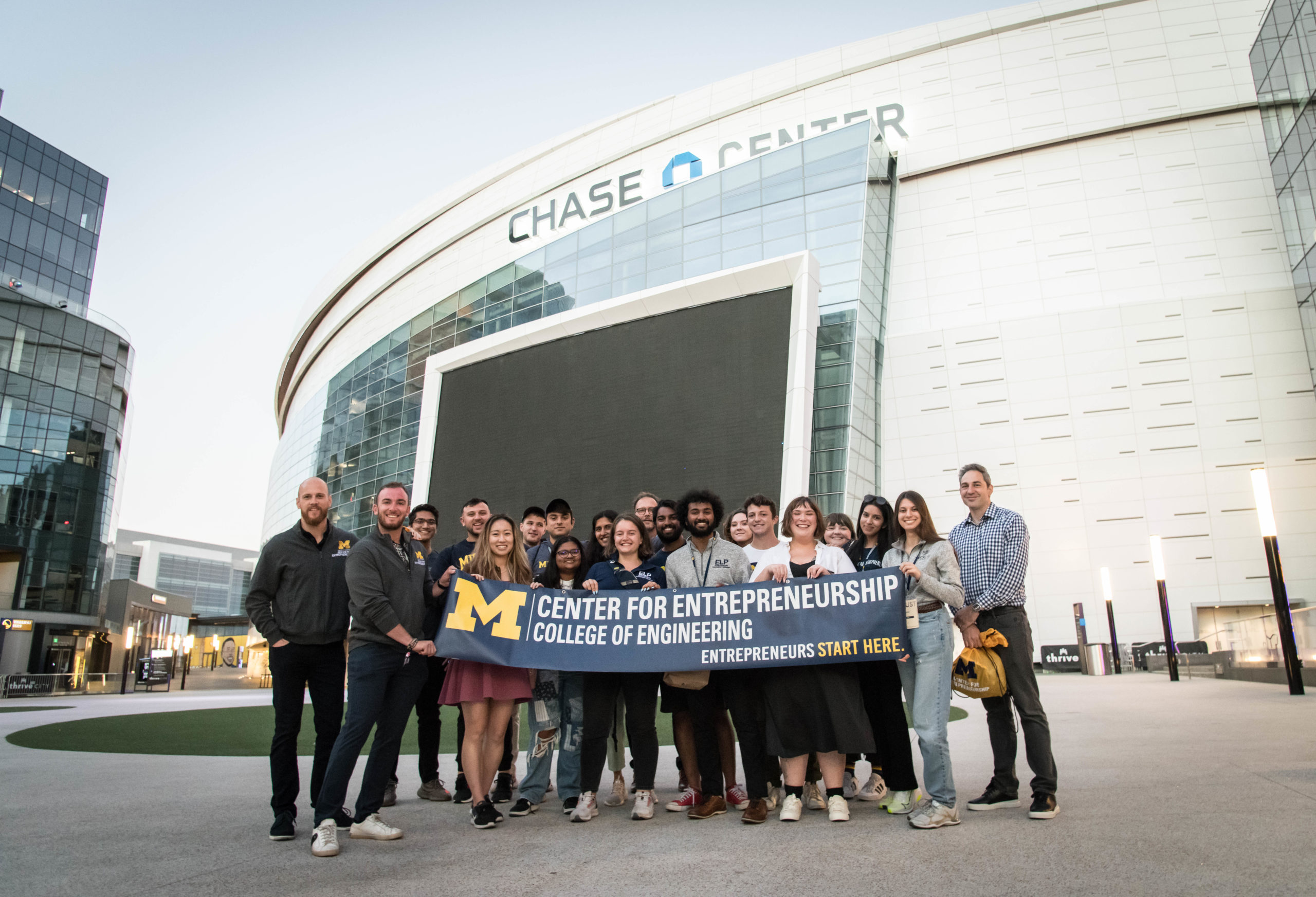
After the final breakfast, students and staff reflected on the trip and said their final goodbyes for heading back to Ann Arbor. For many students, the trek was a whirlwind that inspired personal growth and reflection.
For some students, the trip was crucial to developing networking skills. “I think the most valuable thing I learned was how to really lean into conversations and network with people. I’m shocked at how well I did with talking to both presenters and fellow students and I’m excited to continue developing this skill,” said Julianne Shah.
For others, the trek offered a much-needed spark of inspiration. Caroline Slack said, “I have found myself uninspired the last few months as a creative problem-solver and entrepreneur–this trek not only spurred greater creativity within me, but taught me that it’s okay to hit lows and feel challenged as an entrepreneur, as long as you keep pushing yourself and your mission forward.”
Looking to get involved with the UM entrepreneurial community? Click here to learn more.
